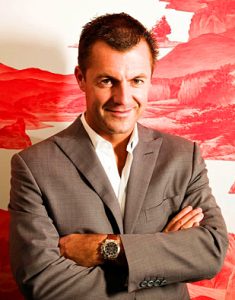Michael Platt – The Art and Science of Risk Control

Today’s post is a profile of Guru investor Michael Platt, who appears in Jack Schwager’s book Hedge Fund Market Wizards. His chapter is called The Art and Science of Risk Control.
Contents
Michael Platt
I’ve been looking forward to writing about Michael Platt.
- He’s English, eight years younger than me, and he runs BlueCrest, a hedge fund.
For a while, BlueCrest allowed retail investors to participate via an investment trust, but they closed that down a few years ago.
- I owned the trust for years and was very happy with it.
Platt appears in Jack Schwager’s book Hedge Fund Market Wizards.
- His chapter is called The Art and Science of Risk Control.
Early life
Platt wanted to be a trader from the age of 12, and started trading when he was 13.
My grandmother was a long-term equities investor and did very well at it. I got involved in stock trading through her.
At the time, the U.K. was going through a privatization phase, and I was just buying all of the stocks when they went public and flipping them. I must have made £20,000 to £30,000.
I always regarded financial markets as the ultimate puzzle because everyone is trying to solve it, and infinite wealth lies at the end of solving it.
Still in his teens, Platt lost half of his account on Black Monday in 1987.
- To make things worse, he sold it all at the bottom.
But that was the only big loss in his career.
I too was almost wiped out in 1987.
- Unfortunately I also lost a lot of money in 2009 (and I didn’t start a hedge fund).
Platt went to the LSE, and then joined JP Morgan for eight years, trading fixed income derivatives.
BlueCrest
Platt left JPM in 2000 to start BlueCrest with William Reeves.
- The firm had $29 bn in assets when Schwager interviewed Platt (2011, written-up in 2012).
Platt runs half of this in a discretionary fund, and the other half uses there was also a trend-following strategy run by Leda Braga (this is what the investment trust followed).
The strategy is always changing.
The implication to Schwager is that if you stay with a static system, eventually, it will degrade.
Performance
Platt’s discretionary fund has compounded at 14% pa.
- Its largest drawdown has been 5%, even through the 2008 crisis.
- Schwager’s “Gain to Pain” ratio works out an incredible 5.6.
The trend-following fund has returned 16% pa (net), with a maximum drawdown of under 13%.
Trading style
Basically, I like buying stuff cheap and selling it at fair value.
I develop a macro view about something, but then there are 20 different ways I can play it. The key question is: Which way gives me the best risk/return ratio?
I don’t have any tolerance for trading losses. I hate losing money more than anything. Losing money is what kills you. It is not the actual loss. It’s the fact that it messes up your psychology.
You lose the bullets in your gun, then the elephant walks past you while your gun’s not loaded. You want to be there when the great trade comes along. 80% of your profits come from 20% of your ideas.
If I enter a trade, and the minute I put it on, I feel uncomfortable, I will just turn around and get right out.
I look at each trade in my book every day and ask myself the question, “Would I enter this trade today at this price?” If the answer is “no,” then the trade is gone.
Most of the trades that I stop myself out of are because of time rather than because of a loss. If I really love the trade and then a month later, it still hasn’t moved, alarm bells start ringing.
When I am wrong, the only instinct I have is to get out. If I was thinking one way, and now I can see that it was a real mistake, then I am probably not the only person in shock, so I better be the first one to sell. I don’t care what the price is.
Risk control
Platt is obsessive about risk control and uses a three-tiered process:
- broad diversification (seven strategies / sectors for the discretionary fund, 150 for the trend-following fund)
- tight controls on losses from individual trader
- a risk management team on top.
The biggest protection we have is liquidating out of overextended trends. The main method is a response curve. When the market reverses, we reinstate our position.
How we do it is a matter of an insane amount of mathematical research, and, of course, is proprietary. It saves your bacon on the big reversals.
Trends
It’s shocking how little you know for certain in financial markets. One of the only things I could say with certainty was that markets trend.
Markets should discount all information and wait for the next piece of information. But that is not what they do.
Our minds just don’t work properly. We make an estimation of the future based on all the knowledge we have of the past. We remember the past in bullet points.
The material with which you fill in the gaps in your past recollections is from today. How you feel today, whatever you are thinking today.
Platt quotes studies (witness experiments) that show that people are poor at remembering the past, and that the framing of questions can change what people “remember”.
- They use the question to fill in the gaps.
If the market is going up today, your forecast is going to be that it will continue going up because it is how you feel at the moment.
In contrast, Schwager thinks that trends arise from fundamentals.
Markets may initially trend for fundamental reasons, but prices overshoot by ludicrous amounts – Platt.
Schwager asked how the system avoided whipsaws.
Our system will tend to keep the position small if the trend is perceived as being weak.
Diversification
We also know that diversification works.
Currently, because of the whole risk-on/risk-off culture that has developed, diversification is quite hard to get. Recently, everything works or everything doesn’t work.
Markets
The big three markets for the discretionary fund are fixed income, credit, and emerging markets.
There’s not much in equities. It’s too qualitative – I prefer quantitative approaches.
We have a small statistical arbitrage programme, which models the price of every stock (using other stock prices as the input) and looks for divergence.
We also had a market neutral strategy that made money, but it wasn’t top quartile.
2007
One UK bank was 60 times leveraged. Its balance sheet was 7 percent of world GDP and over 150 percent of UK GDP. Banks wouldn’t lend to each other because they had too much exposure.
I said there was going to be a total credit crunch, an equity market meltdown, and a flight to quality bonds.
So Platt shut down the equity market neutral strategy (holding $9 bn at the time) because he was afraid of a lack of liquidity.
The LIBOR-OIS (overnight index swap) spread reflects the illiquidity premium. If you lend money for 90 days, you demand a premium because you can’t get it right back.
The market price for the option to break a 90-day loan (the LIBOR-OIS spread) used to be almost nothing because people were so confident. Then suddenly the option to break was worth 200 basis points, then more than 300 basis points. You couldn’t even get 90-day money at the end.
In early 2008, I transferred a vast proportion of the firm’s money into two-year treasury notes. We dumped exposure to every bank possible and went maximum long fixed income.
In 2008, BlueCrest made the most amount of money for its investors in its history. But many of our investors redeemed simply because they couldn’t get their cash from anyone else. We were making about $500 million a month and in numerous months paying out about $1 billion. It was a bit depressing.
BlueCrest didn’t “gate” (cap) monthly redemptions, and the money came back in 2010.
In 2009, we faded a lot of the big calls and put skews in the market. The out-of-the-money strikes were insanely expensive. So we shorted them and protected ourselves with offsetting long positions in the at-the-money options.
The breakeven points were so crazy that you needed to have another major crisis to come anywhere near losing money on the position. And I didn’t think we were going to have another crisis six months after the 2008 crisis.
Traders
I hire specialists. I have a specialist in Scandinavian rates, a specialist in the short end, a specialist in volatility surface arbitrage, a specialist in euro long-dated trading, an inflation specialist, and so on.
I don’t interfere with traders. A trader is either a stand-alone producer or gone. If I start micromanaging a trader’s position, it then becomes my position. Why then am I paying him such a large percentage of the incentive fee?
They all get a capital allocation – I assume, on average, they will use about two thirds. If a trader loses 3 percent, he has to give me back half of his trading line. If he loses another 3 percent that’s it. His book is auctioned to the other traders. Anything that is left is liquidated.
We might recapitalize him, but it depends. How do I feel about the guy?
Every January 1, traders start off with the same 3 percent stop point, unless they carry over some of their P&L.
One year, one guys made about $500M. I said how about I pay you on $400M and you carry over $100M, so you still have a big line. So he would have to lose that $100M plus 3% before the first stop would kick in.
This structure limits losses, but leaves an unlimited upside.
We have a seven-person risk management team monitoring for is a breakdown in correlation. Most of our positions are spreads, so lower correlations increase the risk of the position.
For discretionary traders, I want market makers, people who know that anything can happen. Market makers know that the market is always right.
You are wrong if you are losing money for any reason at all. Value is irrelevant in times of market stress; it’s all about positions.
I look for the type of guy in London who gets up at seven o’clock on Sunday morning when his kids are still in bed, and logs onto a poker site so that he can pick off the U.S. drunks coming home on Saturday night. That’s the type of guy you want –someone who understands an edge.
I hired an economist once, which was the biggest mistake ever. He lasted only a few months. He was very dogmatic. He thought he was always right.
The problem always comes down to ego. Analysts and economists have big egos, which just gets in the way of making money because they can never admit that they are wrong.
The market makers who blew up became way too invested in their positions. Their ego got in the way. They just didn’t want to be wrong, and they stayed in their positions.
Macro and news
There is no hedge against being wrong. If you think rates are going up when they’re going down, I don’t care what trade you’ve done, you’re going to lose money.
There are three things you need to make money: a decent fundamental story, a good trend, and the market handling news the way you think it should.
Bull markets ignore any bad news, and any good news is a reason for a further rally.
Conclusions
Schwager’s key takeaway is Platt’s focus on risk control.
- He implements ideas in complex ways, to maximise risk-reward.
- He also uses stops (time and money, and via 5% loss controls on his traders).
He reviews his positions daily and gets out when he is uncomfortable.
- And he is very interested in how the market responds to news.
I would also note the focus on diversification (many markets and styles) and on trend following.
- Platt sees these two factors as the only things we know about markets.
And he thinks that macro analysis is crucial.
I didn’t expect to learn too much about the way a hedge fund’s proprietary systems work.
- But the basic ideas behind BlueCrest can be applied by everyone.
Until next time.


















